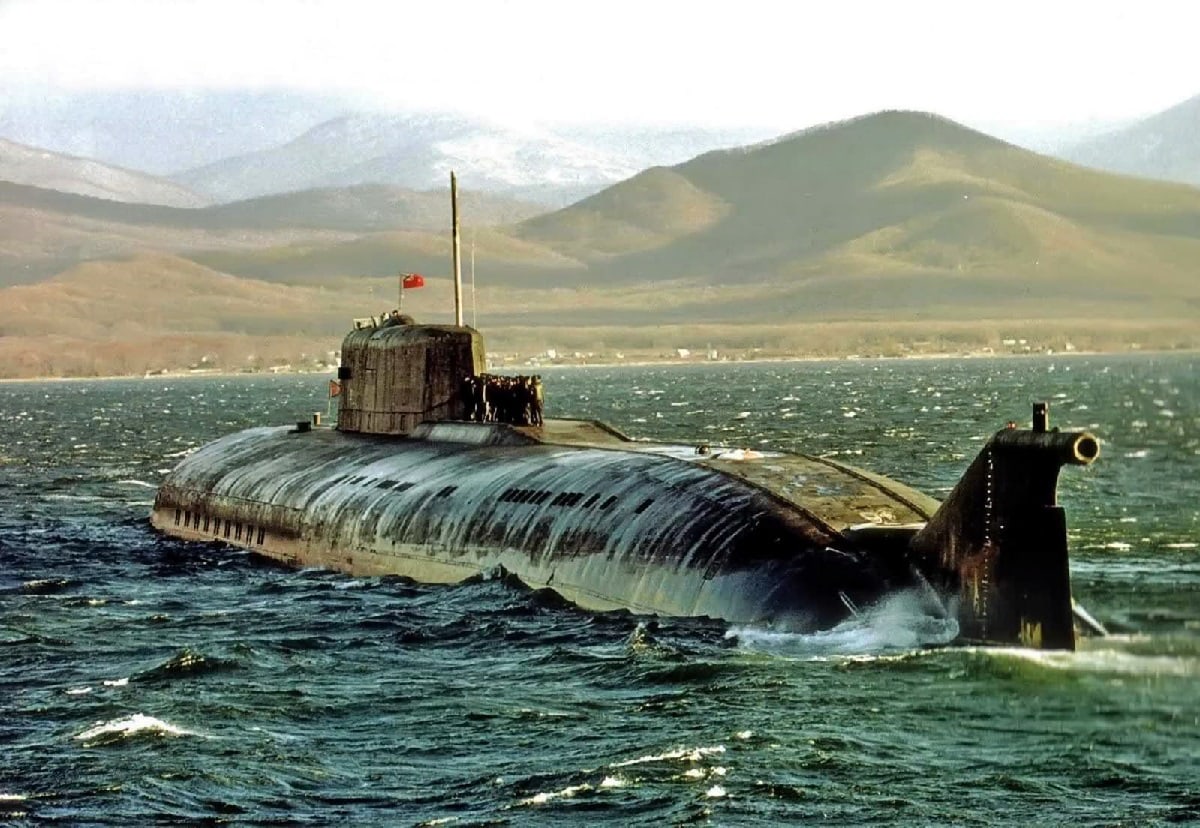Many now seem to doubt the strength of Russia’s military forces after its recent setbacks in the war for Ukraine. But the Poseidon is a far different weapon: In Greek mythology, Poseidon wasn’t just the god of the sea. As one of the most bad-tempered, moody and greedy Olympians, he was known to be vengeful when insulted and was thus considered to be the bringer of earthquakes and storms.
It is somewhat fitting that the Kremlin named one of its newest undersea weapons for the Greek god. The Status-6 Poseidon (NATO reporting name Kanyon) was one of six strategic platforms first announced by Russian President Vladimir Putin in a March 2018 address. It is an autonomous, nuclear-powered, and nuclear-armed unmanned underwater vehicle that was developed by the Rubin Design Bureau.
Nuclear Tsunami?
The capabilities of the weapon have been widely touted by Russia, and earlier this month a popular state TV anchor even warned that Moscow could use the weapon to “wipe Britain off the map,” by unleashing a nuclear tsunami in retaliation for supporting Ukraine. Dimitry Kiselyov, who appears on a Sunday evening primetime news program on Channel One, suggested that the Poseidon nuclear underwater drone could be used to drown the entire UK under a 500-meter tidal wave of radioactive seawater.
Francis Scarr (@francis_scarr), who monitors Russian media, tweeted, “And another nuclear threat to the UK from Russian state TV’s Dmitry Kiselyov: He says his country’s Poseidon nuclear underwater drone could cause a tsunami that would ‘plunge the British Isles into the depths of the sea” and turn them into a ‘radioactive desert’ (with subs).”
Some have questioned whether the Poseidon could create an actual “nuclear tsunami,” but it is believed that it could still do significant damage to coastal regions.
“It’s a torpedo which has an extremely long-range, can travel at high speed and then packs that nuclear punch,” David Hambling, a technology journalist who has authored a book about drones, told EuroNews earlier this month.
“We know that from quite a lot of work which was actually done again back in the crazy days of the Cold War about doing this very thing, and creating tsunamis with nuclear weapons,” said Hambling. “It turns out you need a vast amount of energy to do that – even more than you can get out of a nuclear blast,” he explained, noting that earthquakes fared much better at causing tsunamis.
“If it’s moved into a harbour and detonated very close offshore, it would certainly be able to destroy a city,” Hambling continued. “But it probably wouldn’t damage much beyond that, and it certainly wouldn’t do as much damage as a large nuclear airburst.”
Even if the Poseidon doesn’t quite have the capability to devastate the British Isles, the United States Navy sees it as a potentially serious threat.
This week, Adm. John Aquilino, commander of the U.S. Indo-Pacific Command, disclosed to House lawmakers that the drone torpedo could be deployed via a massive new special-purpose submarine dubbed the Belgorod. The new vessel could be capable of carrying six Poseidon drones.
Pentagon reports confirmed the existence of the unmanned underwater vehicle (UUV) in 2016.
The Poseidon can reportedly carry a nuclear warhead with a blast yield of two megatons (MT), and it can reach underwater speeds of 108 knots, significantly faster than traditional torpedoes. More ominously, the weapon platform is capable of destroying enemy infrastructural facilities, aircraft carrier strike groups (CSG), and other targets. The drones, along with other nuclear-power submarines, which act as the carriers for the weapons, make up part of Russia’s so-called oceanic multipurpose system.
While this Poseidon may not have the devastating power of its Greek God namesake, it should still be a serious threat to the U.S. Navy and to coastal cities.
Now a Senior Editor for 1945, Peter Suciu is a Michigan-based writer who has contributed to more than four dozen magazines, newspapers and websites. He regularly writes about military hardware, and is the author of several books on military headgear including A Gallery of Military Headdress, which is available on Amazon.com. Peter is also a Contributing Writer for Forbes.

